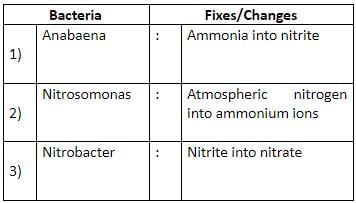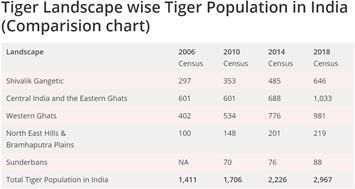UPSC CSE Prelims Paper 1 (GS) Mock Test - 9 - UPSC MCQ
30 Questions MCQ Test - UPSC CSE Prelims Paper 1 (GS) Mock Test - 9
Depositories play a vital role in the stock market. In this context, which of the following statements is/are correct with respect to depositories?
1. These are institutions which hold securities in dematerialised form.
2. Depositories are regulated by the Securities and Exchange Board of India.
3. At present, there are only two depositories in India.
Select the correct answer using the code given below.
1. These are institutions which hold securities in dematerialised form.
2. Depositories are regulated by the Securities and Exchange Board of India.
3. At present, there are only two depositories in India.
Select the correct answer using the code given below.
Consider the following statements:
1. Constitution of India provides a provision for the nomination of Anglo-Indians to either House of the Parliament.
2. Anglo Indians have not been defined anywhere in the Constitution.
3. No Anglo-Indian has been nominated to any State Assembly to date.
Which of the statements given above is/are correct?
1. Constitution of India provides a provision for the nomination of Anglo-Indians to either House of the Parliament.
2. Anglo Indians have not been defined anywhere in the Constitution.
3. No Anglo-Indian has been nominated to any State Assembly to date.
Which of the statements given above is/are correct?
Which of the following adaptation mechanism is/are seen in the tropical rainforests?
1. The leaves have drip tips
2. Buttress and stilt roots
3. Growth of epiphytes
Select the correct answer using the code given below.
1. The leaves have drip tips
2. Buttress and stilt roots
3. Growth of epiphytes
Select the correct answer using the code given below.
A bill to amend the Article 368 of the constitution would require to be
1. passed by a majority of two-thirds of the members of each House of Parliament present and voting.
2. passed by a majority of the total membership of each House of the Parliament.
3. ratified by Legislatures of not less than one-half of the States.
Select the correct answer using the code given below.
Consider the following statements:
1. According to the Indian Constitution, the President with respect to any UnionTerritory may specify any caste as scheduled caste by public notification.
2. State Legislatures have the power to include/exclude any caste from the list of Scheduled castes.
3. Any bill to modify the list of schedule caste should be agreed by the Registrar General of India only.
Which of the statements given above is/are correct?
With reference to ‘credit rationing’, which of the following statements is correct?
Which of the following can be considered as the causes of the deflationary gap in an economy?
1. Fall in consumer spending
2. Fall in investment
3. Production is more than demand
Select the correct answer using the code given below:
Climate Change Performance Index (CCPI) is released by:
In which of the following cases can a court issue the writ of Mandamus?
1. To prevent a tribunal from exceeding its jurisdiction
2. To enforce a contractual obligation
3. To command a public official to perform his official duties
Select the correct answer using the code given below.
Pathalgadi movement, often seen in news refers to a movement to protest against:
Consider the following statements in the context of Pitt's India Act of 1784:
1. This act made a distinction between the commercial and political activities of the East India Company.
2. It combined the offices of the Governor-General of Bengal and Commander-in-Chief.
3. The authority to appoint Governor-General was still held with the Court of Directors, but only with the approval of the Crown.
Which of the statements given above are correct?
Which of the following countries border the North Sea?
1. Norway
2. France
3. Ireland
4. Netherland
5. Belgium
Select the correct answer using the code given below.
Consider the following statements regarding the Tiger Census:
1. It is a quinquennial exercise carried out by the National Tiger Conservation Authority (NTCA).
2. According to the recent census, Karnataka has the maximum number of tigers.
3. Among the tiger reserves, the Buxa tiger reserve records the highest number of tigers.
Which of the statements given above is/are correct?
He was a pioneer of social reform through journalism in Bombay. He started the newspaper Darpan. He is known as the father of Marathi journalism. He founded theBombay Native General Library. Which of the following personality is being described above?
With reference to Flue-Gas Desulphurisation (FGD), often seen in the news, consider the following statements:
1. It is a process that can be used to remove sulfur and nitrous oxides from exhaust flue gases of thermal power plants.
2. Dry Sorbent Injection technique is one of the popular methods of flue-gas desulphurisation.
Which of the statements given above is/are correct?
Consider the following statements with reference to salt production in India:
1. Rajasthan state is the largest producer of salt in India.
2. In India, salt production and distribution are monitored by the Food Safety and Standards Authority of India.
Which of the statements given above is/are correct?
With reference to the district judge, consider the following statements:
1. He/She has supervisory powers over all the subordinate courts in the district.
2. Appeals against his orders and judgments lie to the sessions judge.
3. He/she has the power to impose any sentence including life imprisonment and capital punishment.
Which of the statements given above is/are correct?
With reference to the two important genres of Indian music i.e. Hindustani music and Carnatic music, consider the following statements:
1. While the origin of Hindustani music is often associated with religion, the origin of Carnatic music was secular.
2. While Carnatic music is associated with several classical dance forms, Hindustani music is not related to any classical dance form.
3. The sarangi is a major accompaniment in Hindustani, while the violin reigns in Carnatic.
Which of the statements given above is/are correct?
With reference to ocean currents, consider the following statements:
1. Oceans currents flow in an anticlockwise direction in the northern hemisphere and clockwise in the southern hemisphere.
2. Counter equatorial current moves from east to west.
3. In the lower latitudes, warm ocean currents move along the eastern margins of the continents.
Which of the statements given above is/are not correct?
Biocontrol agents are natural enemies or competitors of crop pests. They are used to control plant diseases and pests. Which of the following are proven biocontrol agents?
1. Bacillus thuringiensis
2. Dragonflies
3. Baculoviruses
Select the correct answer from the code given below:
Which of the following characteristics were common among Nath pan this, Siddhas and Yogis?
1. They advocated renunciation of the material world.
2. They advocated practice of yogasanas, breathing exercises and meditation for salvation.
3. They were popular particularly among upper castes and affluent classes.
4. They insisted that the crux of bhakti lays in sharing other’s pain.
Select the correct answer using the code given below:
Consider the following statements with reference to the State Legislatures:
1. There exists no uniformity in organisation of State Legislatures in India.
2. Creation/abolition of a State Legislative Council is not deemed as a constitutional amendment.
Which of the statements given above is/are correct?
Which of the following are causes that accentuate hunger crises in India?
1) Poverty
2) Low sanitation
3) Low women empowerment
4) Dietary issues
Select the correct answer using the code given below:
Consider the following pairs:

Which of the pairs given above is/are correctly matched?
Consider the following statements regarding tigers in India:
1) There has been a substantial increase in the tiger population in the last 5 years.
2) Amrabad Tiger Reserve is the largest tiger reserve in the country.
Which of the statements given above is/are incorrect?
From the locations given below, where would you find the remains of the famous ancient temple of Pandrethan?
In the context of reservation of seats under the 73rd Amendment Act, consider the following statements:
1. Not less than 1/3rd of the total number of seats are reserved for women.
2. Not less than 1/3rd of the total number of seats are reserved for Scheduled Castes/Scheduled Tribes.
3. Not less than 1/3rd of the total number of seats reserved for Scheduled Castes/Scheduled Tribes shall be reserved for women among them.
4. Not less than 1/3rd of the seats of chairpersons at each level is reserved for women.
Which of the statements given above are correct?
Consider the following statements regarding Tax Buoyancy:
1) It is the responsiveness of tax revenue with a change in the tax rate.
2) Tax buoyancy for the financial year 2020 was lowest in the last decade.
3) In general, it is high for indirect taxes than direct taxes.
Which of the statements given above is/are correct?
Which of the following best describes the term “gene pool centres”?
With reference to Escherichia coli (E coli), consider the following statements:
1) It is commonly found in the gut of humans and cold-blooded animals.
2) It spreads through the consumption of undercooked meat products and raw milk.
Which of the statements given above is/are correct?
















